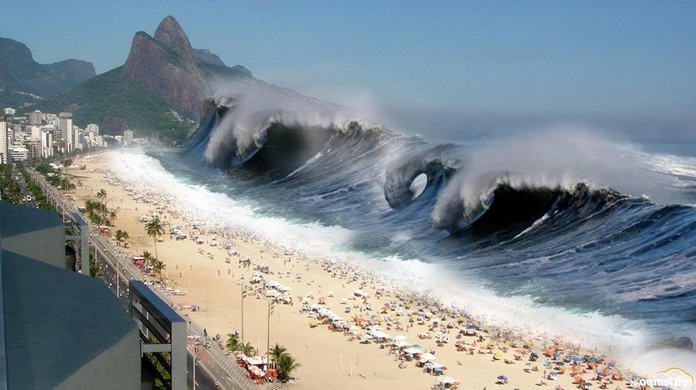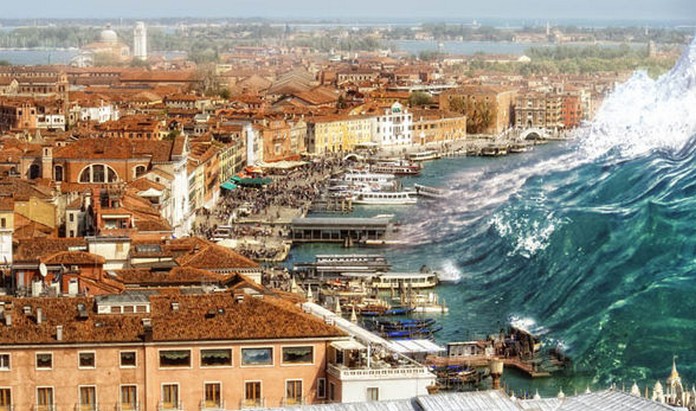
 The first step to survival is to be able to identify the early signs of a tsunami. The Pacific ocean is home to volatile tectonic activity, which explains why 75% of the world’s volcanic eruptions and 90% of the world’s earthquakes occur in the Pacific.
The first step to survival is to be able to identify the early signs of a tsunami. The Pacific ocean is home to volatile tectonic activity, which explains why 75% of the world’s volcanic eruptions and 90% of the world’s earthquakes occur in the Pacific. Step 2: Stay away from the beach
An early sign of an impending tsunami is that water along the coast will recede. It pulls back and exposes the seafloor. Do not go to the beach to investigate! You’ll only be putting yourself at risk for when the water surges back.
Step 3: Seek higher ground
Tsunamis travel quickly, and you may not have enough time to clear the hazard zone. In this case, look for a tall building, with a sturdy concrete foundation. If you see one nearby, run inside and get to the roof as quickly as possible.
Step 4: Grab onto something and hold on
If you can’t make it to a building in time, your best bet is to grab onto something and hold on. Though that might not sound very practical, hold the eye-roll for a moment.
Step 5: It’s not over ’til its over
A tsunami isn’t one wave, but a series of waves, known as a tsunami wave train. Waves may be anywhere from 5 minutes apart, to an hour apart.
And be aware that the first wave that hits isn’t always the strongest. So even when you think it’s over, stay where you’re safe until you hear from local officials.















